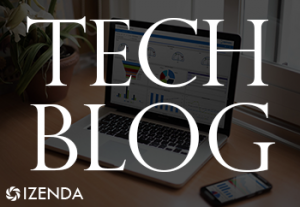In the not-so-distant future, this likely will happen when you have a car accident. Sensors, connected with smart apps, will instantly: a) Gauge how seriously you may be hurt. b) Report the accident location to police and medical personnel. c) Determine how much damage your vehicle has sustained. d) Report the accident to your insurance company. e) If warranted, offer options on how to replace the car. f) If warranted, even alert your attorneys.
 Sound far-fetched? Not in the world described by Daryl Plummer, Research VP and Gartner Fellow. He gave a Gartner local briefing last week in Atlanta titled “Securing Digital Business Through an Internet of Things.”
Sound far-fetched? Not in the world described by Daryl Plummer, Research VP and Gartner Fellow. He gave a Gartner local briefing last week in Atlanta titled “Securing Digital Business Through an Internet of Things.”
Plummer focused on the implications for business in this growing Internet of Things (IoT) world, where everyday objects and machines have network connectivity, allowing them to send or receive data.
Blurring Digital, Physical Worlds
Gartner defines digital business as the creation of new business designs that blur the digital and physical worlds. Amazon, for example, was not a digital business when it started selling books online. That “business moment” came with the Kindle, which enabled books to be delivered digitally, without the physical supply chain. The physical book became a virtual product.
Conversely, the 3D printer turns something from the virtual world into a physical product.
In 2009, there were 1.6 billion personal devices compared to .9 billion IoT objects collecting and sharing data. By 2020, forecasts project there will be 7.3 billion personal devices compared to a staggering 30 billion networked objects. The communication between smart machines will dwarf person-to-person communications.
From Creepy to Helpful
As consumers get used to this connected world, the technology can initially seem creepy to some people. For example, not everyone wants beacons in stores to collect data on their shopping habits – what aisle they visited, how many times they entered the store and more. However, many consumers are perfectly willing to “opt in” through their smartphones, giving the store data in exchange for potential discounts and other incentives.
Connected machines can play a valuable role in making their product better, or safer. The technology in elevators, for example, now teaches technicians how to fix them, according to Plummer. Hitachi uses Twine, a small sensor designed to help homeowners detect moisture, temperature and other issues, to monitor expensive medical equipment for potential issues, Plummer said.
Security Always Issue for IT, and IoT
Security remains one of the big challenges for IoT. “60 Minutes” reported last Sunday on potential security risks in connected homes and connected cars. Correspondent Leslie Stahl drove a car while a man with a laptop standing nearby was able to override her vehicle’s controls and disable her brakes. Massachusetts Sen. Edward Markey issued a scathing report last week, claiming nearly all new cars are vulnerable to hacking. Some observers said “60 Minutes” and Markey were exaggerating the danger, saying this type of hacking is extremely difficult to do.
Plummer told the audience that focus on security and risk is an important component of digital business. However, he said IT departments must be more engaged in understanding IoT rather than simply worrying about controlling the technology. Security and privacy have long proven elusive for many companies. Having a recovery plan for security intrusions is crucial in a landscape where hackers and cyberattacks are commonplace.
Plummer’s advice for companies creating strategies to become a digital business: “Think of it like a cookbook, not as a strategy document. Outcome comes first, the how-to comes last.” There will be failures in getting there. The key, he said, is minimizing the risk not preventing it.
You Have the Data, Now What?
As companies amass the volumes of data from the IoT world, they will need ways to aggregate and analyze that information to compete in the marketplace and to better serve their customers.
The demand for data analytics now spans all levels of an organization in today’s emerging business world. Companies providing BI functionality to Independent Software Vendors, Solutions Providers and Enterprise users will be expected to offer products that empower users to create their own reporting.
Izenda seamlessly integrates ad-hoc reporting, dashboards and analytics into your software application. Deliver a robust, feature-rich reporting solution that keeps you ahead of the curve.

